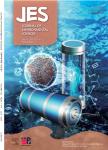版权所有:内蒙古大学图书馆 技术提供:维普资讯• 智图
内蒙古自治区呼和浩特市赛罕区大学西街235号 邮编: 010021

作者机构:State Key Laboratory of Pollution Control and Resource Reuse Tongji University
出 版 物:《Journal of Environmental Sciences》 (环境科学学报(英文版))
年 卷 期:2013年第25卷第9期
页 面:1736-1744页
核心收录:
学科分类:083002[工学-环境工程] 0830[工学-环境科学与工程(可授工学、理学、农学学位)] 08[工学]
基 金:supported by the National Natural Science Foundation of China (No. 51138009, 41072172) the National Key Technology R&D Program (No. 2012BAJ25B04) the Program for New Century Excellent Talents in University (No. NCET-11-0391) the Project of Shanghai Science and Technology Commision (No. 11QH1402600)
主 题:anoxic-aerobic system low dissolved oxygen filamentous bulking low nitrate concentration nitrate-storing capacity
摘 要:This laboratory research investigated a possible cause of filamentous bulking under low level of dissolved oxygen conditions (dissolved oxygen value in aerobic zone maintained between 0.6-0.8 mgO2 /L) in an airlift inner-circular anoxic-aerobic reactor. During the operating period, it was observed that low nitrate concentrations affected sludge volume index significantly. Unlike the existing hypothesis, the batch tests indicated that filamentous bacteria (mainly Thiothrix sp.) could store nitrate temporarily under carbon restricted conditions. When nitrate concentration was below 4 mg/L, low levels of carbon substrates and dissolved oxygen in the aerobic zone stimulated the nitrate-storing capacity of filaments. When filamentous bacteria riched in nitrate reached the anoxic zone, where they were exposed to high levels of carbon but limited nitrate, they underwent denitrification. However, when nonfilamentous bacteria were exposed to similar conditions, denitrification was restrained due to their intrinsic nitrate limitation. Hence, in order to avoid filamentous bulking, the nitrate concentration in the return sludge (from aerobic zone to the anoxic zone) should be above 4 mg/L, or alternatively, the nitrate load in the anoxic zone should be kept at levels above 2.7 mg NO-3N/g SS.